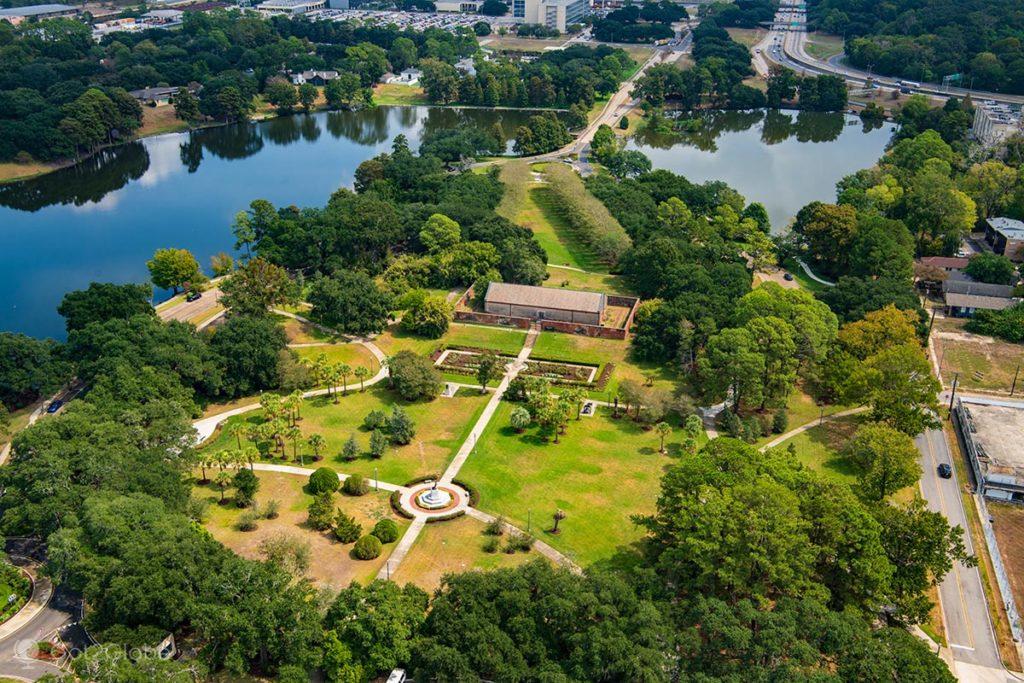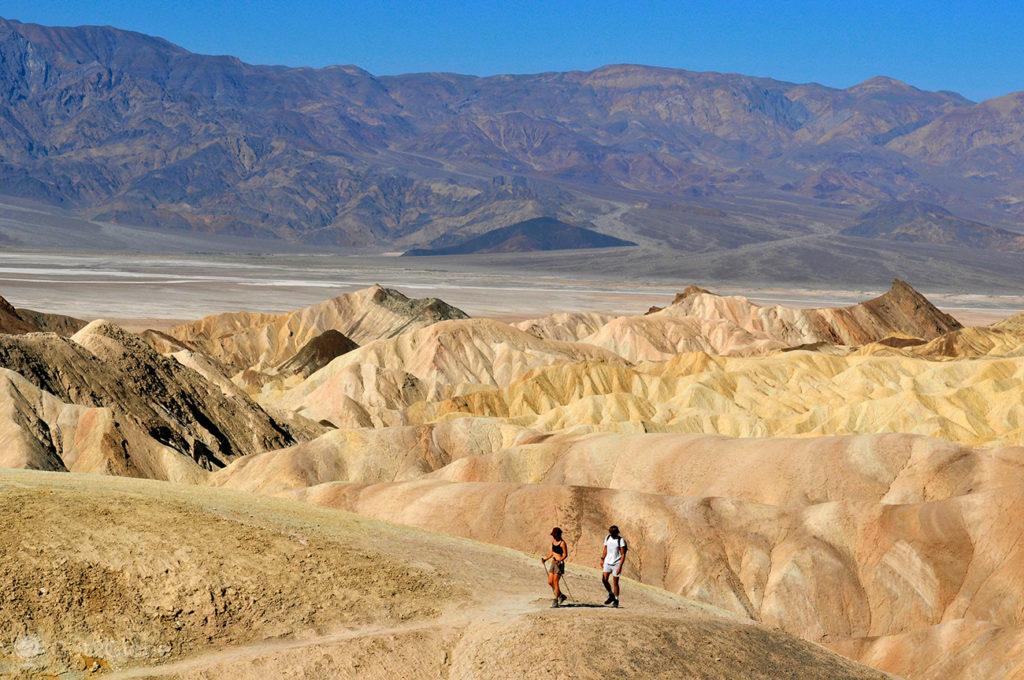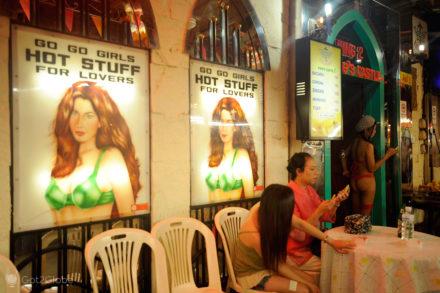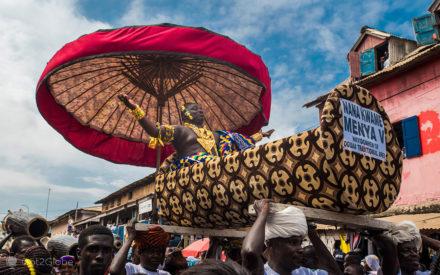Arriving in Baton Rouge, coming from New Orleans, gives us a shock of asepsis that we didn't expect.
From one moment to the next, centuries-old French architecture made of wood and cast iron appears.
Add to that the bright colors, the restless crowd, the smell of weed (read marijuana) and the post-night party vibe on Bourbon and Frenchmen Streets. We must point out, in defense of Baton Rouge, that we entered directly into its center and stayed there.
Without losing sight of the Lousiana State Capitol, the seat of the state's federal government, a symbolic building of the city, which identifies and locates it even from dozens of kilometers away. Shaped like an inverted T, the building is 140 meters high and has thirty-four floors.
It is the highest in Baton Rouge, but only the seventh in Louisiana.
The new tower-shaped Lousiana State Capitol replaces the previous capitol, a distinct work of art, erected in 1846, with the purpose of avoiding an excessive concentration of political influence in New Orleans, the largest city in Louisiana.
At the time, the fourth largest in the US
When we visit, we quickly understand why the palace-like building, full of prodigious stained glass windows, remains one of the city's unmissable historical buildings.

Along with the new Louisiana Capitol, of course.
The Louisiana State Capitol's Iconic Skyscraper
Contrary to what happens in most cities in the United States, the successor's skyscraper rises into the sky in absolute solitude.
Around it, at ground level and in contrast to the limestone of the facades, there is a lake and two gardens, including the one at Veteran's Memorial Park, all contiguous and open.

Going to Baton Rouge and not climbing to the top of its State Capitol is much more difficult and serious than going to Rome without seeing the Pope.
Aware of this, intrigued by the grandeur and eccentricity of the building and what its 360º panorama would reveal to us, we give it priority.
On the pedestrian path from the hotel where we were staying, a few smaller buildings blocked our view of the colossus for a moment.
As soon as we entered the N 4th Street, facing North, we have it in front of us again, increasing with each step.

We passed St. Joseph's Cathedral and passed a few large buildings with darkened faces.
North of North Street, we enter the geometric domain that serves as a preamble, a place for departments, the library and the state museum.
In the complex's gardens, we are distracted by a population of squirrels busy with their collection.

A wide parking strip creates a gap in the green.
On the other side, we head to the Capitol steps, made of 49 granite steps, each with the name of one of the other US states, in the order in which they became states.
At the base of the staircase, in order to see the distant dome of the skyscraper, we are forced to make a dramatic neck tilt.

We climb it between the two sculptures that flank it.
One, the “Patriots.” The other, "Pioneers".
In this, the most preponderant figures in the colonization of Louisiana, starting from the pioneering French expedition, line up.

After completing the staircase, we access the Memorial Hall.
They give us carte blanche to move around.
We peeked into the Senate Chamber.
We found it empty.

We got into one of the elevators and anticipated the climb to the panoramic top.
In good American fashion, when we arrive at the exit floor, we come across a gift shop.
We exchanged it for the outside.
It had been a long time since we left the hotel.
The Unobscured Panoramas of the Heart of Louisiana
In the middle of October, it is still humid and oppressively hot. We noticed a front of cumulus nimbus distant, but huge, with darkened and lightning bases.
They had formed over the Gulf of Mexico. It entered Louisiana, in our direction.

We go around the dome.
We admired how Baton Rouge spread out on the east bank of the Mississippi, with the tiny patch of West Baton Rouge on the other side of the river.
Also there, countless ships, especially barges, travel along the Mississippi.
The local port is, in fact, in terms of tonnage, the tenth in the USA

To the north, huge petrochemical installations stretch, owned by the famous oil company Exxon Mobil, another proof of how Baton Rouge became one of the main industrial and technological hubs of the Great American South and the capital of Louisiana.
In large part, due to the determined and ambitious minds of some of its politicians.
Huey Long: From Incubating Dictator to Murder Victim
Even in the vulnerable Democracy of the United States, when ideologies and interests clash, tyrannical acts and tragedies occur. If Dallas victimized John F. Kennedy, Huey Long found himself a victim of Baton Rouge.
In that same Capitol that Huey Long did everything he could to see built as a tower and where he maintained an apartment on the 24th floor, it is said that because he considered that the altitude would help cure the hay fever that afflicted him.

Huey Long evolved from a traveling salesman to a renowned lawyer.
As a Democrat, a populist like few others, he soon became the 40th Senator, owner and master of Louisiana, with presidential ambitions.
Huey Long became so manipulative and controlling that historian David Kennedy had no qualms about writing “that his regime in Louisiana was the closest thing to a dictatorship that America had known.”
In September 1935, Long entered the Capitol determined to pass a series of laws that would consolidate the increasingly undemocratic oppression of his state, including the removal of an opposing judge who had represented a particular district for 28 years.
By 9:20 on the night of the 8th, Huey got it. More than indignant, irate, the judge's son-in-law, named Carl Weiss, approached Huey Long and fired a single shot. Huey passed away thirty-one hours later. Weiss, this one, immediately collapsed.

60 bullets fired by Huey Long's security guards, who were nicknamed Cossacks and Skullcrushers. Huey Long was buried next to “his” capitol, a statue above the tomb honors him.
A huge opposition saw him as a populist tyrant. And yet, more than 200.000 people attended his funeral.
We finish the tour at the Capitol museum that describes these facts. We walked towards the state library, at the south end of Capitol Gardens.
The Tropical and Soggy Weather of Baton Rouge
The clouds that we had seen from the top of the panoramic balcony were imminent. Under the cumulus nimbus, the scorching sun gives way to shadow.

In a flash, the clouds release a frightening rush.
We took refuge in the Capitol Park Museum.
There we entertain ourselves with history, tradition and culture cajun from Louisiana.

Half an hour later, the battle had already fled to the north.
We return outside, with the sun struggling with the remaining clouds.
We decided to continue to Mississippi. We followed its bank east of the Capitol to the south, seeing what it would reveal to us.
The High Waterfront that protects the City from the Mississippi River
The task was made easier by a riverbank separated from the city by a busy Riverside Road, an elevated riverbank, preventive of flooding, a structural landmark in Louisiana always vulnerable to hurricanes.

We crossed paths with joggers, with boyfriends and a bunch of young BMX riders who do everything they can to let us photograph some of their maneuvers.”Y'all should shoot this one, bro, this one is special!".
We had arrived at the city's Riverfront Plaza.
An elevated bridge originating from a complex of pavilions and exhibition spaces passed over River Road and continued to City Dock.

Already on the Mississippi and alongside the ship USS KIDD, the only Destroyer American that survived the 2nd World War and that remains as it is, based there as a memorial museum.
From this Riverfront Plaza, the flagpole that celebrates the city's colonial genesis also stands out.
The French were the first Europeans to explore these parts of the Americas, a delegation led, in 1698, by Pierre Le Moyne d'Iberville.
Now, narratives from that expedition revealed that, upon arriving in that area of the Mississippi, the French found a stick, red like the one we had before us, stuck on the bank.

They found that it marked a divide between the domain of the Houma indigenous people and that of the Bayagoula.
According to the writings of André-Joseph Pénicaut, a carpenter who traveled on the expedition, the natives already called the place Istrouma (red mast). French colonists immortalized the current name of Baton Rouge.
And if New Orleans enjoys its global fame, Baton Rouge proliferates in its other prominent place.







































































